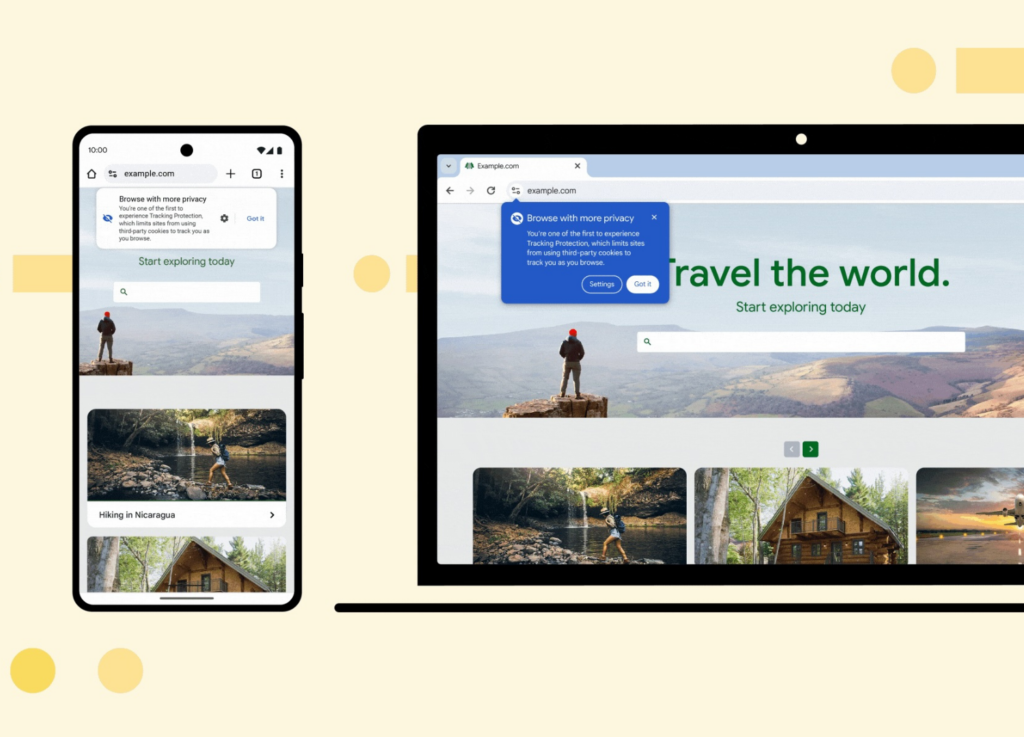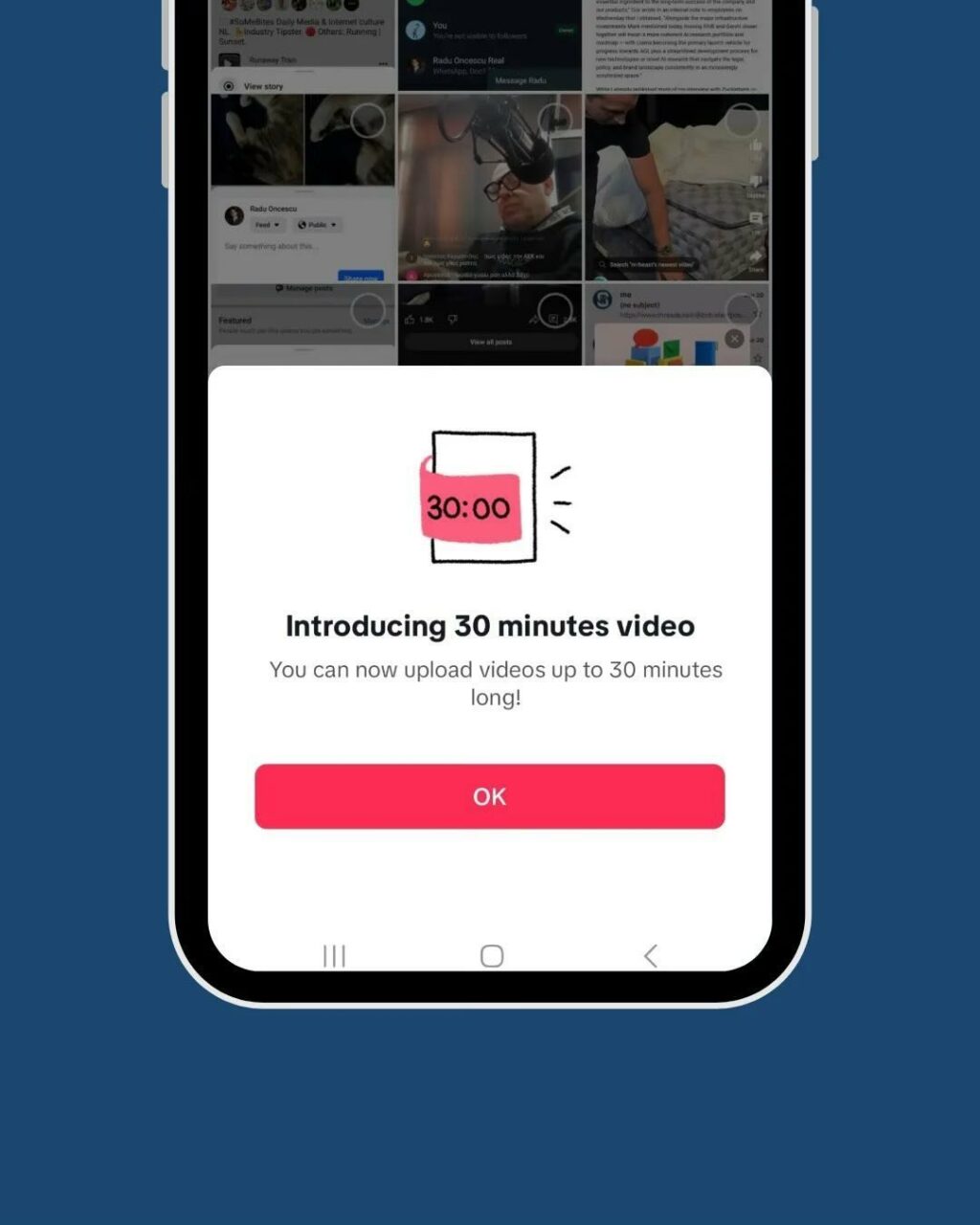Digital marketing roundup – January 2024

Let’s dive into what’s new in the world of digital marketing!

On January 4th, a new feature called Tracking Protection, which restricts third-party cookies by default, began rolling out to 1% of Chrome users globally.
This adjustment not only changes the functioning of websites but also transforms the methods of data collection, impacting digital marketing strategies and how we measure what users do online. This can also affect reporting on how successful a campaign has been and how your website is both navigated and used.
Why now? Google is considering phasing out third-party cookies by the second half of 2024, a crucial move in its Privacy Sandbox initiative. The final decision hinges on addressing competition concerns raised by the UK’s Competition and Markets Authority.
Why is this important? If your marketing heavily relies on targeted advertising with third-party cookies, it’s time to reconsider your tactics and begin preparing your websites before Google completely retires third-party cookies. At Purpose Media, our team can assist you with this.
To read more on this from Google, click here: https://blog.google/products/chrome/privacy-sandbox-tracking-protection/
Meta announced recently that all users, on both Android and iOS, will have the option to look back at their Link History archive.
When link history is on, any links that are tapped inside of Facebook and visited in the mobile browser will be saved there for 30 days.
It will also allow Meta to use your history information to show you more relevant ads in the app.

The company plans to give users more options to control how they use Instagram and Facebook in countries that are part of the EU, the European Economic Area and Switzerland.
This shift comes as Meta prepares for new regulations from the Digital Markets Act (DMA) that will start being enforced in March 2024 across Europe. One way Meta is doing this is by giving people who have already chosen to connect their Instagram and Facebook accounts the choice to either:
By voluntarily giving users more control now, Meta is trying to get ahead of the regulatory requirements that the DMA will impose on large tech companies like Meta in Europe.
[img credit: Meta]
All advertisers now looking to run ads about social issues, elections and politics will now be required to indicate when their ad ‘contains a photorealistic image or video, or realistic-sounding audio, that was digitally created or altered by AI or other methods’.
Although Meta originally announced the new policy last November, it is now in full effect ahead of the upcoming U.S. Election campaign.
Both YouTube and TikTok have also implemented tags for AI-generated content, with other platforms looking to implement new rules to provide more transparency and clarity for viewers in-stream.
In its commitment to adapting to shifting consumer needs, Google is beginning to integrate more social media features into its search results.
SearchEngineJournal.com recently showcased data from SimilarWeb, revealing that 59% of Google.com visitors were on mobile devices.
To cater to these mobile visitors, Google’s new features in Search and Discover include a personalised Google Discover feed, web stories with ads, shopping results, social media videos and more.

Meta is introducing a range of new creator management tools within its Business Suite, offering agencies more ways to oversee their talent across Meta’s apps.
These new creator management options aim to streamline the process by giving agencies access to analytics, profile tools, and more, all while maintaining a clear separation between user profiles and the business.
For an agency handling a large number of content creators, the Creator Management Tools can help you scale your daily operations by providing:
Creator Management Tools for agencies come with a wide range of functionalities, including revenue linking and importing existing connections, as well as:
[img credit: Meta]
To aid job seekers in finding their next role, LinkedIn has added some new features, which include job listings by different categories, job preference highlights and new AI job application assistant tools.
Job collections will categorise open roles into different sectors and settings, making it easier to find the job you want, such as jobs that offer remote work, good parental leave and more.
LinkedIn is also adding a new Job Preferences filter option, which will enable you to set specific parameters and elements that you’re most interested in. Recruiters will then be able to see these preferences, while LinkedIn will also highlight the relevant aspects of every job role displayed to you in the app.
Current preference options currently include employment type (full-time, part-time, contract, etc.), location type (remote, hybrid, on-site), as well as minimum pay preference for U.S. members.
LinkedIn says that it will look to add more options over time, providing more ways to more easily find jobs with the most desirable elements.

To help creators maximise their performance, TikTok is providing more analytics insights and updated discovery tools via new desktop-based creator tools (see image).
This new format makes it easier to research your content performance and audience response.
This new test was spotted by Matt Navarra in the iOS beta version of the app. TikTok has been steadily increasing its maximum post limit for years, with it rising to ten minutes in 2022.
This change puts TikTok in even more direct competition with YouTube.
Although it appeared briefly, users were able to see a new toggle on Monday 8th to sort search results by ‘Latest’.
Looking to expand its Collections feature, Instagram is allowing you to add them to your profile so people can see what you’re into.
This could help give visitors more insights into your interests and whether they should follow.
In the latest version of the app, you now have the option to halt a Stories upload mid-process, which could be a valuable way to catch errors or issues before they get made viewable in the app.
Get in touch to hear how our expert team can help you get the most from your digital marketing.